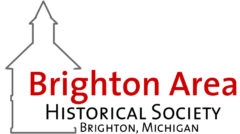One of this countrys earliest ski jumping meets was held at Ishpeming, MI in 1892; the origin of the National Ski Association, 1904. A Norwegian immigrant, Mikkel Hall was living in Ishpeming when the first of six sons was born; Henry, February 27, 1893. At a very early age, on home-made barrel staves, he and all his brothers were inspired with a love of the sport. Henry won jumping records in 1913, World Amateur Champion, Duluth, MN; 1914 National American Champion and 1916 National Professional Champion both in Glenwood, MN.
At age of 23 his jumping brought him the worlds record, 203 at Steamboat Springs, CO, March 7, 1917. While taking time out for Army duty in WW I, his National Professional crown was won by his best friend Anders Haugen in 1919 & 1920. In 1921 Henry regained the title. He and brothers, Carl, Clarence, Arthur, George and Magnus began research for the highest elevation in the SE Michigan area. In the fall of 1923 they built a scaffold of 2×6 lumber in Northville at Seven Mile and Edward Hines Drive. Ski Jumping was promoted by building slides and holding contests drawing 1000s of spectators. The Hall brothers organized the Detroit Ski Club.
In 1929, following a search for a satisfactory site in Brighton, the high sand hill one mile NE of Brighton on Trunk Line M-23 (Flint Road) was purchased. In 1935, the Michigan State Ski Club was organized and the building of the Brighton slide began in earnest A 130 steel tower, the tallest in the country, was erected. The hill was 250 long with a 100 drop. A 50 woodslide and a toboggan slide with a 300 yard runway were planned. Contests were scheduled for February, 1936. The first was thwarted by a snow trucks breakdown; the next week gale-like winds made it impossible. The last weekend was the third attempt to ride the 130 slide. Rochester, Pontiac and Detroit sent skiers. Halls last jump was late in the day; snow conditions had changed. He fell at the end of the slide. One ski tip lodged in the snow, . . twisting him, snapping his hip at the socket and throwing him forward on his head. One ski . . struck him in the chest. At Mellus Hospital in Brighton physicians predicted hed be in a wheel chair for months. He was later moved to Henry Ford Hospital. Injuries had been incurred in the past but this one ended his competitive career. Four months after a major fall at age 79, Henry recovered to continue skiing and teaching. 1982 was the last time on skis; Henry was honored at the Steamboat Springs Winter Festival skiing the landing slope. Both Henry, d. April 17, 1986, and wife Olga E., d. November 13, 1985, are buried in Loveland Burial Park, Loveland, CO.
The Depression had a firm grip on the country. The construction of the jumps brought employment to local residents. In 1937, the Brighton site was sold to the Detroit Winter Sports Club to be dismantled and set up at the Rochester site; at the end of John R. Road. A number of local teens met Henry Hall and tried out their skiing skills on the jumps with wood slats with a strap for a work shoe and a small strap fastened around the heel. Among the teens were Harold Jarvis (dec.) and Gerry Burgess. Horace Taylor has memories to properly fit the landing slope snow was gathered and trucked by his father Clarence. These rolling hills and deep valleys are now the location of Old Dominion development.
Compiled by Marieanna Bair, of research by Fay Hall; conversations with Gerry Burgess, Tom Leith and Horace Taylor
